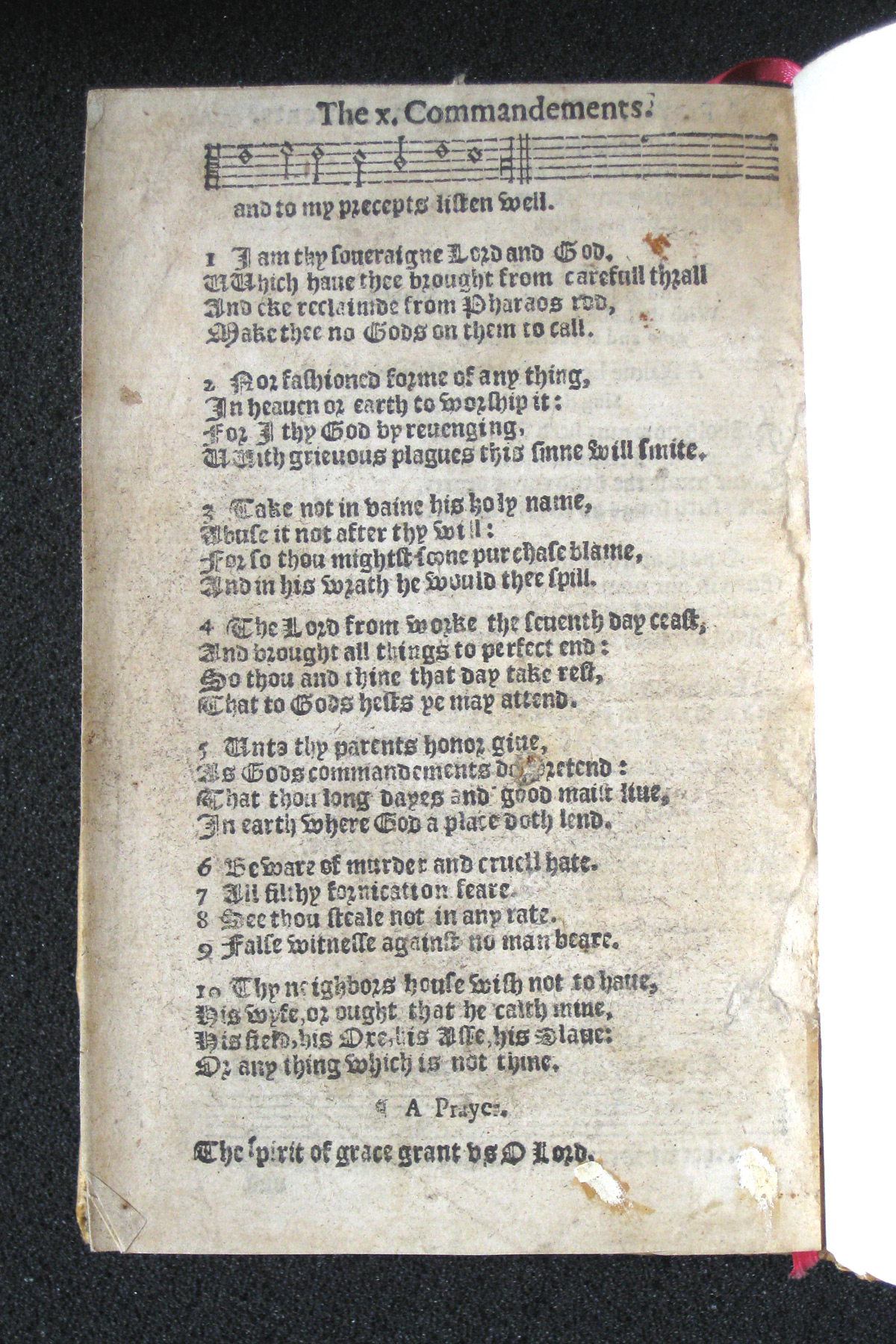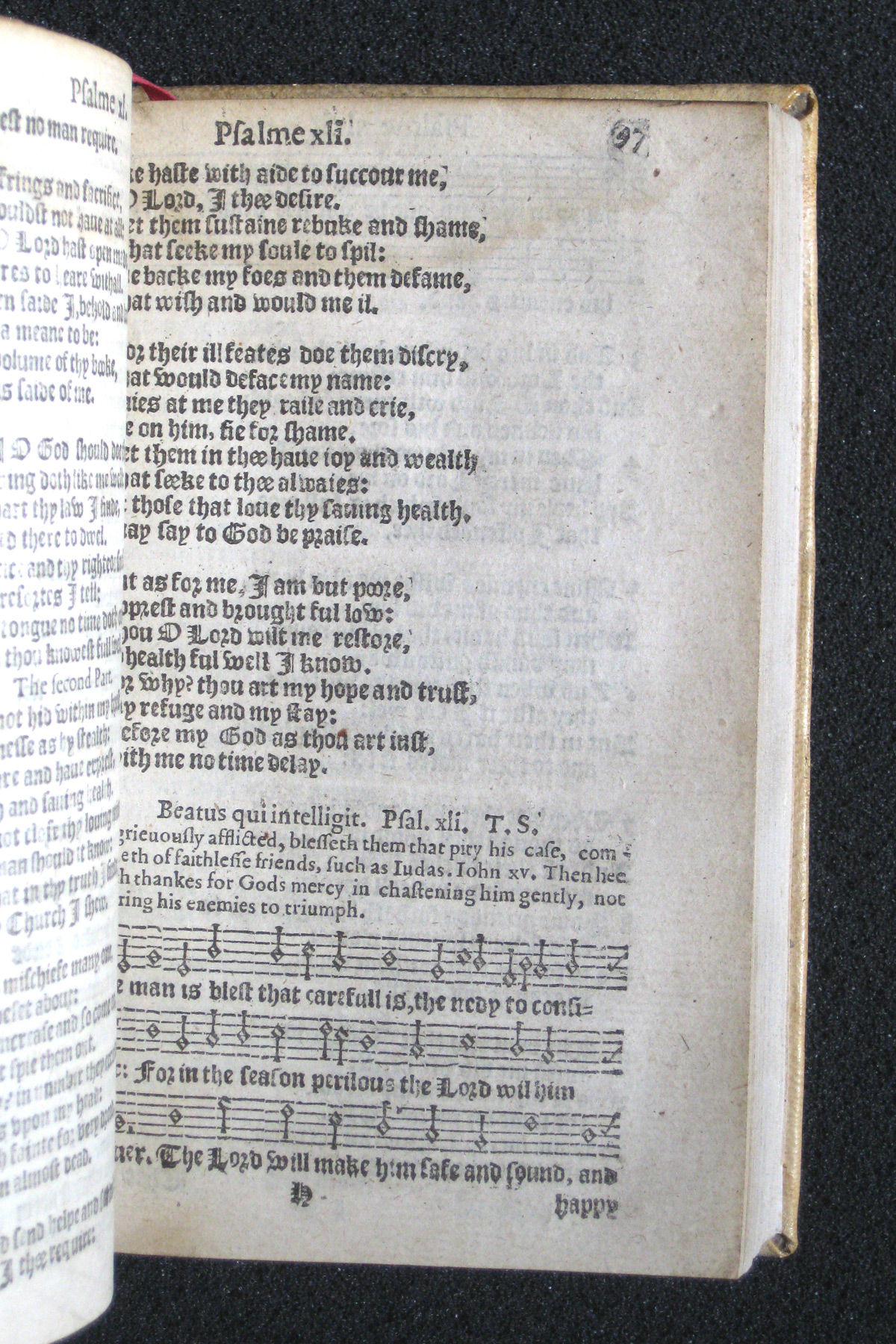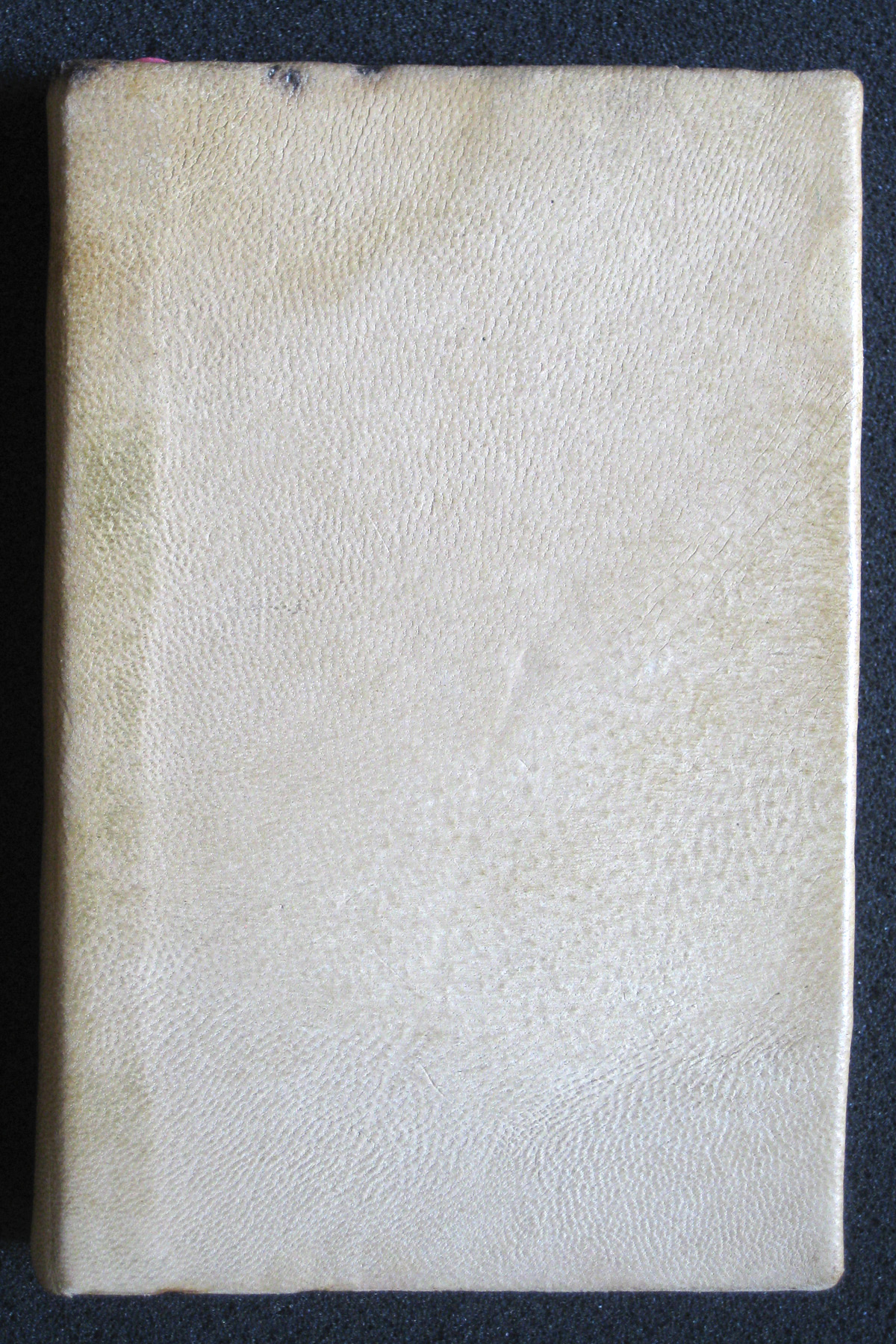Bible, Old Testament. The Whole booke of Psalmes, Collected into English meter by T. Sternh. I. Hopk. and others: conferred with the Hebrew, with apt notes to sing them withal. London: John Wolfe for the assigns of Richard Day, 1589. Octavo. Unrecorded.
The Sternhold and Hopkins metrical Psalter is so well known that no introduction to the work seems necessary here, beyond stating the basic fact that it was arguably the best selling book of verse and music in Early Modern England from its introduction in the mid-16th century through at least the end of the 17th. Sold alone as well as bound in with Bibles and New Testaments, its various editions edified generations of readers, those both well-to-do and quite otherwise.
The chart of Sternhold and Hopkins editions included in the 2nd edition of the STC indicates that this single-column black-letter copy in octavo belongs to series 8/47: as called for, Psalm CI begins on Q1v, p.208, and the last numbered leaf is p.316 on Y7v. The earliest edition of this series recorded in the STC dates from three years later in 1592 (STC 2481.5), and claims to come from the press of a different printer, John Windet. He also printed all subsequent editions in the series. Each contains the same elaborate title page border (McKerrow 204) present in this 1589 copy, a border that had also been used by John Wolfe for some other earlier publications. It depicts the Royal Arms and the Arms of the Stationers’ Company, four cherubs, and the figures of David and John the Baptist(?). This book, however, was printed from a substantially different setting of type than others in series 8/47 (including STC 2481.5), and, thus, constitutes a distinct earlier edition.* No other copies are recorded.
The seven editions belonging to series 8/47 that are recorded in the STC were published between 1592 and 1603 and printed by Windet. The existence of an earlier copy by Wolfe indicates that Windet did not originate the series, but instead inherited it when he took over Wolfe’s other Psalter printing in 1591. This new edition also begins to narrow the gap between series 8/47 and the earlier series, 8/45, which John Day stopped printing after his edition of 1583 (STC 2466.7). It is now quite possible to imagine that Wolfe printed others between 1585, when he began printing Psalters under Richard Day, and 1591, when Windet took over.
The present copy, in a recent pigskin binding with new endpapers and a ribbon bookmark, collates A-Y8. Psalm 150 ends on Y7v, and the text cuts off at the end of Y8v following a song on the Ten Commandments and the beginning of “A Prayer.” Although no other copy of this edition exists for comparison, the collation of the 1592 edition suggests that a total of twelve leaves are likely lacking, quires 2A8 and 2B4. (Later editions extend 2B4 to a full eight leaf quire. In the 1592 edition, though, the text ends on 2B3, and 2B4 is a blank.) The title page and all leaves are remarkably clean, squarely trimmed, and evenly toned. “THE” on the title page and three initial capitals (on A2r, A5v, and C2r) have been colored red at some point, possibly quite early.
While, generally speaking, Sternhold and Hopkins Psalters are legion, copies from series 8/47 are incredibly scarce. Of the seven editions recorded in the STC, only the edition from 1601 (STC 2503.3) is present in the US, with copies at the Folger Shakespeare Library and the University of North Carolina (according to the more recent ESTC). The 1599 edition (STC 2497.7) is only known from a copy in private hands, and others (STC 2490.7, dated 1596, and probably STC 2481.5) exist, like this 1589 copy, only in imperfect examples. In total, the ESTC records only ten (maybe eleven) copies in the series that were printed over a twelve-year period.
All said, this is a unique copy of an otherwise unattainable edition of the Sternhold and Hopkins metrical Psalter, one that alters, albeit slightly, some narratives about the Elizabethan book trade. It deserves a home at a major research library and inclusion in the ESTC and other relevant bibliographies. SOLD
*By the standards used by the STC, in which fifty-percent of the sheets need to have been reset, this easily qualifies as a distinct edition. There are, however, anomalies. For example, the outer forme of the sheet that makes up S8 appears (by several measures) to have been printed from the same setting that appears in the only available copy of the 1592 edition, but the inner formes of the two copies are clearly distinct, complete with spelling differences. There may be other instances of this throughout the volume; further analysis is needed. This oddity is quite remarkable, not least because the formes are from editions at least nominally printed by different printers; it may even suggest that Wolfe passed standing formes or half-printed sheets to Windet when he also handed over the block for the title page border—assuming, of course, that Windet printed the distinct inner forme himself. It is hard to say: mass-produced books like the Sternhold and Hopkins Psalter tend to defy the tidy criteria of traditional bibliography. Not only is there the likelihood of copies with mixed sheets, but there is also, as we apparently see here, the possibility of sheets that mix formes.





